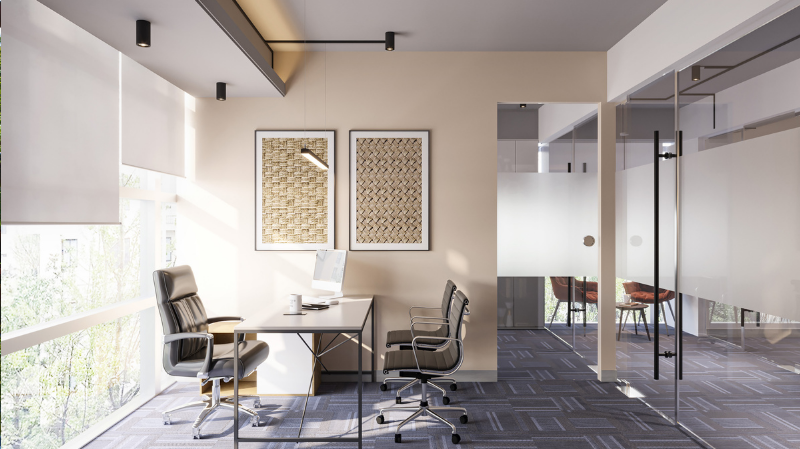
The Growing Australia Flexible Office Space Market: Key Trends, Challenges, and Future Outlook
January 03, 2025
The Australian flexible office space market is poised for significant growth, with expectations to expand at a compound annual growth rate (CAGR) of 9.40% from 2024 to 2032. The increasing demand for agile and adaptable office spaces, combined with the rise of remote and hybrid work models, has made flexible office spaces a prominent segment in the commercial real estate industry. This growth trajectory reflects the shift in how businesses operate, making flexible workspaces a vital part of the modern business landscape. In this article, we’ll explore the key drivers, challenges, and future outlook for the flexible office space market in Australia.
The Australian market for flexible office spaces is now entering a phase of rapid growth, fueled by changing workforce dynamics and the rise of remote and hybrid work. With cities like Sydney, Melbourne, and Brisbane leading the way, flexible office spaces have become an essential part of the Australian business environment.
Key Drivers of Market Growth
1. Rising Demand for Hybrid Work Models
One of the primary factors driving the growth of the flexible office space market in Australia is the increased adoption of hybrid work models. Post-pandemic, many organizations have shifted to a flexible work setup, where employees work both remotely and from the office. This shift has created the need for more adaptable office spaces that provide employees with the ability to work from various locations without the constraints of a fixed office.
Flexible office spaces offer businesses the ability to scale their office requirements based on fluctuating workforce numbers, making them the ideal solution for hybrid work models. The flexibility to adjust office space according to demand ensures businesses can remain agile and minimize operational costs.
2. Cost-Effectiveness and Operational Efficiency
The cost-effectiveness of flexible office spaces is another critical factor driving market growth. Traditional office leases often come with long-term commitments, high upfront costs, and fixed office configurations. Flexible office spaces, on the other hand, offer a variety of pricing models, such as pay-as-you-go, monthly, or annual membership plans. This allows businesses to avoid the burden of long-term contracts and better manage their office expenses.
Additionally, flexible workspaces are often equipped with shared amenities such as high-speed internet, meeting rooms, and reception services, reducing the need for businesses to invest in these resources independently. This operational efficiency makes flexible offices an attractive solution for startups and small businesses with limited capital.
3. Increased Focus on Collaboration and Innovation
As businesses embrace a more collaborative and innovative work culture, flexible office spaces provide the ideal environment. These spaces foster creativity and collaboration by offering a variety of work areas, such as open desks, private offices, and communal spaces. With a growing emphasis on teamwork, flexible offices enable businesses to create an environment conducive to spontaneous interactions, brainstorming sessions, and networking opportunities.
Furthermore, flexible office providers often host community-building events, networking sessions, and workshops that can help businesses stay connected and engaged with other companies and industry professionals.
4. Advancements in Technology
The integration of technology into flexible office spaces has made them even more attractive to businesses. Smart office solutions, such as cloud-based systems, virtual office platforms, and high-tech conference rooms, allow companies to seamlessly manage their office space usage and foster better communication between teams. These technological advancements support the remote workforce by providing a seamless and efficient experience for hybrid teams.
With advancements in property management software, businesses can easily book workspaces, track expenses, and even access additional services such as printing, catering, and event management, all through user-friendly platforms.
Challenges Facing the Flexible Office Space Market
Despite the positive growth outlook, there are several challenges that the flexible office space market in Australia must address to continue expanding:
1. Competition Among Providers
The Australian flexible office space market is highly competitive, with numerous providers offering similar services. Leading providers such as WeWork, Regus, and Spaces dominate the market, but there is also a growing presence of local players and niche providers catering to specific industries. As demand continues to rise, businesses must differentiate themselves by offering unique services, superior amenities, and exceptional customer experiences to stand out in a crowded market.
2. Market Saturation in Major Cities
While the flexible office space market in Australia is growing, there is the potential for saturation in key metropolitan areas like Sydney and Melbourne. As more providers enter these cities, it may become increasingly difficult for businesses to find affordable and flexible office spaces. Providers will need to expand their offerings to secondary cities and regional areas to tap into new growth opportunities.
3. Uncertainty Around Future Work Trends
While hybrid and remote work models are currently the trend, the future of work is still evolving. Businesses may need to adapt quickly to changing workforce demands, and there is uncertainty around how long these trends will last. Flexible office providers must stay agile and be prepared to adjust their offerings based on future work patterns.
Future Outlook for the Australian Flexible Office Space Market
The future of the flexible office space market in Australia looks promising, with significant growth expected in the coming years. Factors such as the ongoing shift towards hybrid work, increasing demand for cost-effective office solutions, and advancements in technology will continue to drive growth.
By 2032, the Australian flexible office space market is expected to reach new heights, with more businesses adopting flexible work arrangements and seeking out scalable, collaborative, and cost-efficient office solutions. To capitalize on this growth, providers will need to focus on offering innovative solutions, expanding their networks, and embracing the latest technology to meet the evolving needs of businesses.
Emerging Trends in the Flexible Office Space Market
1. Sustainability and Green Workspaces
As businesses continue to prioritize sustainability, the demand for eco-friendly office spaces has risen. Flexible office providers are increasingly incorporating green building practices, such as energy-efficient lighting, water conservation, and the use of renewable energy sources. These sustainable features not only help reduce operating costs but also appeal to environmentally-conscious businesses and employees.
Some coworking providers are taking it a step further by offering green certifications, ensuring that their spaces meet stringent environmental standards. This trend is likely to grow as Australia intensifies its efforts to reduce carbon emissions and adopt more sustainable business practices.
2. Rise of Hybrid and Virtual Offices
The flexible office space market is closely linked to the rise of virtual offices. A virtual office allows businesses to operate without a physical location, providing a business address, phone services, and mail handling. This model is becoming increasingly popular among remote-first companies and digital nomads. Flexible office spaces that offer hybrid options, including virtual office solutions, are capitalizing on the growing trend of businesses choosing more fluid and decentralized operations.
3. Focus on Employee Well-being and Wellness
The importance of employee well-being in the modern workplace cannot be overstated, and flexible office providers are increasingly incorporating wellness features into their spaces. From wellness rooms, meditation spaces, and gym facilities to fresh air zones and ergonomic furniture, these workspaces are designed to promote both mental and physical health.
As companies place more emphasis on the overall health of their employees, the availability of wellness-centric office spaces will likely become a key selling point for flexible office providers.
4. Increased Demand for Private Offices
While open-plan layouts have long been a hallmark of flexible office spaces, there is a noticeable shift towards private offices. Businesses looking for a more secure and focused working environment are seeking out private offices that can offer greater privacy and less distraction.
As remote work becomes more common, some companies are transitioning back to physical office settings, but with an increasing preference for private, smaller spaces. This shift is driving demand for flexible office providers to offer customizable, private office options alongside shared spaces.
Potential Challenges in Expanding the Flexible Office Market
1. Real Estate Costs
One of the primary concerns for flexible office providers in Australia, especially in metropolitan areas, is the high cost of real estate. Cities like Sydney and Melbourne have some of the highest office rental rates globally, which can make it difficult for smaller providers to remain competitive in the market. However, large-scale operators such as WeWork and IWG (Regus) often have more resources to manage these costs and pass on savings to businesses in the form of flexible pricing models.
Additionally, these higher costs may influence the pricing structure of flexible office spaces, potentially making them less affordable for smaller businesses or startups.
2. Shifting Demographics of Workers
Another challenge for the flexible office space market in Australia is the changing demographics of the workforce. With younger generations more likely to embrace remote or hybrid work, providers must be mindful of designing spaces that cater to a more diverse workforce. This could mean offering more flexible membership options, such as part-time desks, short-term agreements, or increased flexibility for different industries.
3. Government Regulations
The flexible office market must also keep pace with local regulations, including zoning laws, occupational health and safety standards, and other regulations related to shared office environments. Compliance with these regulations can vary from state to state and may require significant resources for operators to navigate the legal landscape effectively.
















